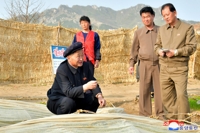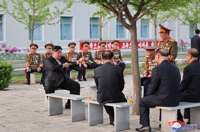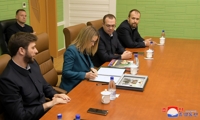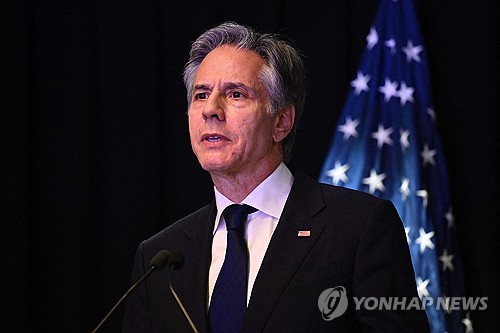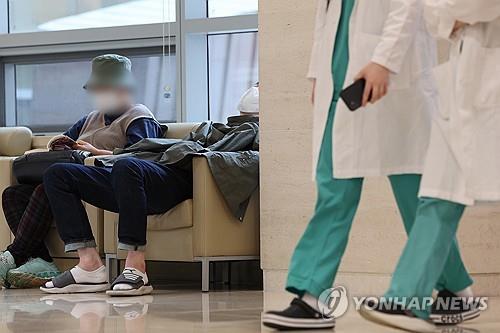(LEAD) New virus cases dip to below 50; cluster infections traced to churches in focus
(ATTN: UPDATES with more details throughout; CHANGES photos)
SEOUL, June 29 (Yonhap) -- South Korea's new virus cases fell back to below 50 on Monday, but a continued rise in cluster infections, mostly tied to churches, put to the test the country's capability to fight the virus.
The country added 42 cases, including 30 local infections, raising the total caseload to 12,757, according to the Korea Centers for Disease Control and Prevention (KCDC).
The tally marked a sharp fall from 62 new cases of COVID-19 reported Sunday and 51 additional cases identified Saturday, which might be due to less testing over the weekend.
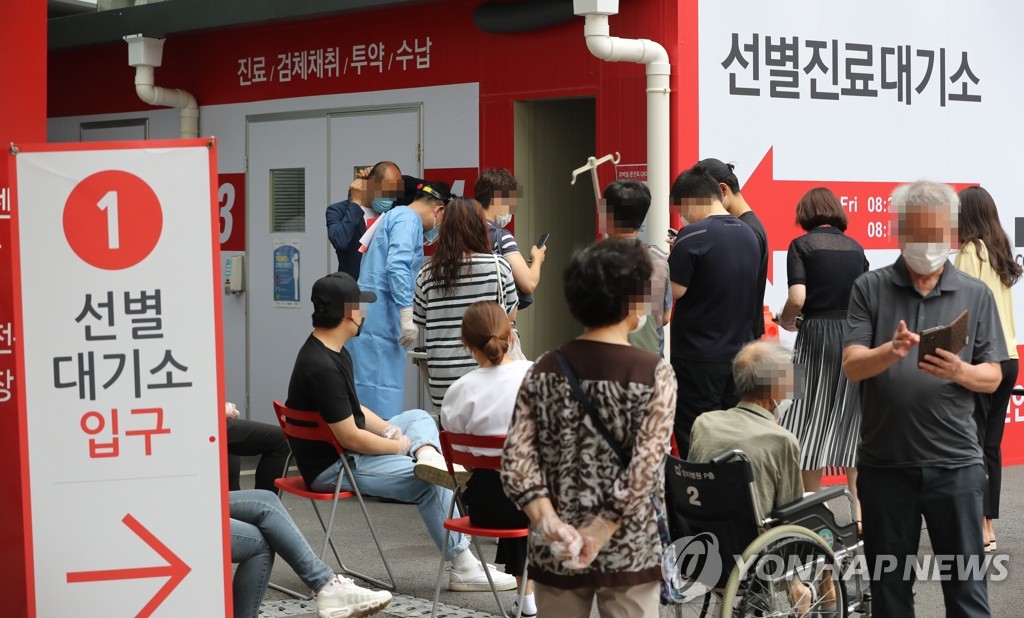
Citizens line up to receive new coronavirus tests at a screening center at a hospital in Seoul's southwestern ward of Gwangak on June 29, 2020, as at least 27 virus cases tied to a major church in the district were reported. (Yonhap)
The country's health authorities remain concerned about sustained rises in local infections and imported cases, which may trigger another wave of virus outbreak in the summer.
The total global virus caseload topped 10 million Sunday, less than seven months since the first reported outbreak in China late last year, as the virus is spreading at an alarming pace.
Of the locally transmitted cases, 21 cases were reported in densely populated Seoul and the surrounding area. Two cases were newly reported in the central city of Daejeon and three in Gwangju, 329 kilometers south of Seoul, the KCDC said.
Cluster infections tied to churches in the greater Seoul area have emerged as the bane of the country's efforts to contain further virus spread.
Cases traced to a major church in Seoul's southwestern ward of Gwanak reached 27 as of noon Sunday. The infections were connected to close contacts via choir activities and a two-day workshop program, the KCDC said.
More small-scale mass infections were also reported in the capital and adjacent areas.
"Infections tied to small gatherings have increased, making it hard to contain virus transmission. It is worrisome that the virus is spreading in regions beyond the Seoul metropolitan area," Yoon Tae-ho, a senior health official, said in a briefing.
Yoon said the government is considering the adoption of measures to stem the virus spread at churches and other religious facilities.
The government remains cautious about designating religious facilities as "high-risk" places as critics regard the move as infringing on religious freedom.
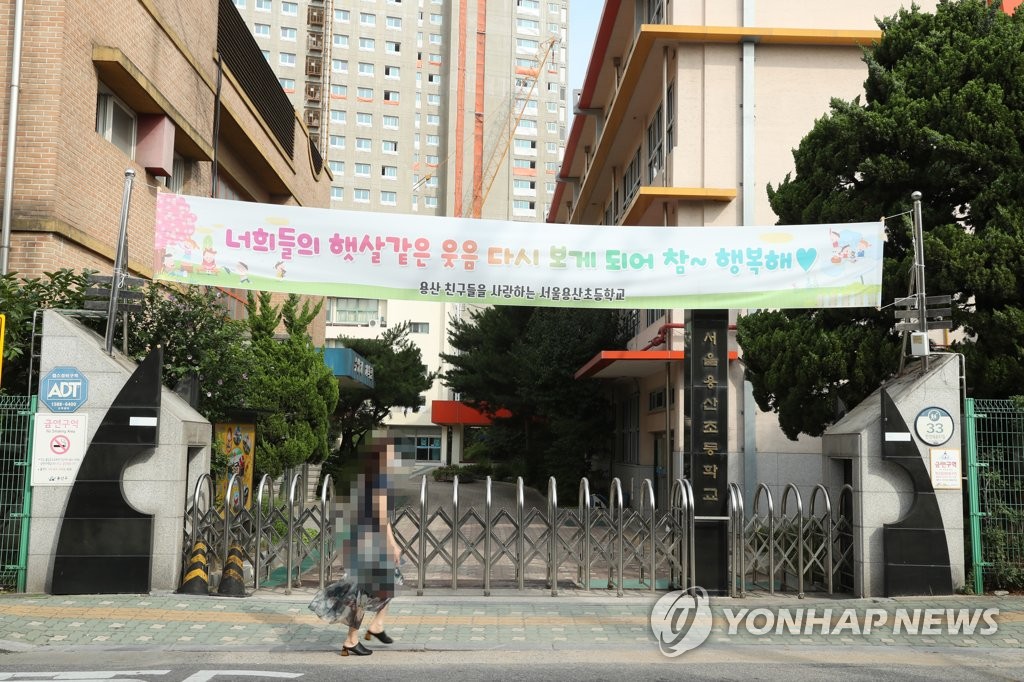
This photo, taken on June 29, 2020, shows the closed front gate of an elementary school in Seoul's central ward of Yongsan as the school has suspended students' off-line classes after virus cases were reported at a day care center run by the defense ministry in the vicinity of the school. (Yonhap)
South Korea has been dogged by rises in sporadic cluster infections since it relaxed strict social distancing on May 6 on the back of the flattened virus curve. The greater Seoul area accounted for most of the newly added cases this month.
Health officials warned that they may consider expanding tougher infection preventive measures -- currently in place only in the Seoul metropolitan area -- across the country if virus situations get worse.
Health authorities unveiled a three-level social distancing scheme on Sunday, saying that it could strengthen the degree of social distancing depending on the severity of the virus outbreak.
The country is currently in the Level 1 social distancing scheme, under which the number of daily virus infections, mostly below 50, is manageable under the current medical system.
Level 2 will be applied when daily infections exceed 50 for the 14th straight day, but remain below 100. Level 3 means there is an outbreak of mass infections, under which daily virus cases exceed 100, according to the KCDC.
The country also decided Sunday to allow spectators to start attending sports events, albeit in a limited number, as early as this week under the condition that strict infection prevention measures are taken.
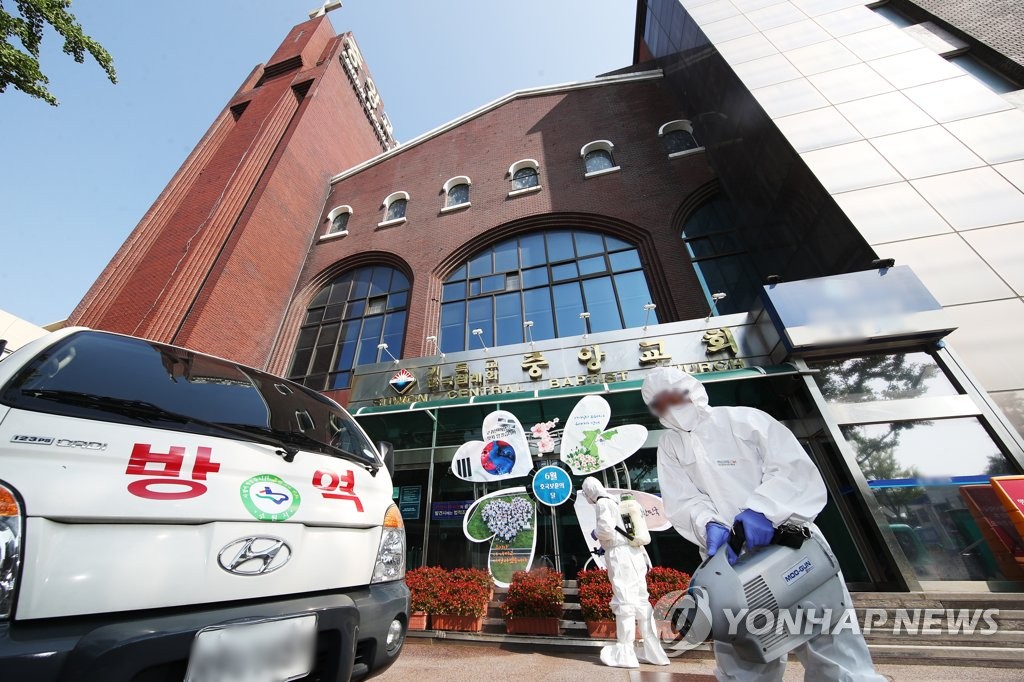
Health officials disinfect areas surrounding a church in Suwon, south of Seoul, on June 28, 2020, as at least three cases tied to the Baptist church were reported. (Yonhap)
In a bid to stem the virus spread, health authorities plan to advise companies to let their employees stretch the use of summer vacation to early September. It will also guide firms in splitting lunch hours into two or three segments.
The country is also struggling to stem cases coming in from overseas. It reported 12 additional imported cases, raising the total such cases to 1,562.
Recently, cases coming from Asia have spiked mainly because the number of foreign migrant workers has risen. Of 22 new imported cases reported Sunday, 18 cases came from Asian countries, including four from Saudi Arabia and two from Pakistan.
At least 19 cases were connected to cluster infections on Russia-flagged cargo ships docked at a port in the southeastern city of Busan.
Imported cases, once the main source of virus cases here, fell to a single-digit figure early this month after the country strengthened quarantine measures on all international arrivals in April.
But such cases have bounced back to double-digit numbers since mid-June.
South Korea, meanwhile, reported no additional deaths, bringing the total death toll to 282. The fatality rate was 2.21 percent.
The total number of people released from quarantine after full recoveries stood at 11,429, up 65 from the previous day.
The country has carried out 1,259,954 tests since Jan. 3.
sooyeon@yna.co.kr
(END)
-
 'Queen of Tears' weaves rich tapestry of Korean contemporary art
'Queen of Tears' weaves rich tapestry of Korean contemporary art -
 Ateez member Yunho throws first pitch at MLB match between Dodgers, Mets
Ateez member Yunho throws first pitch at MLB match between Dodgers, Mets -
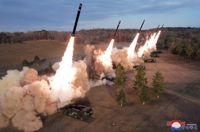 N. Korea says Kim guided simulated nuclear counterattack drills for 1st time
N. Korea says Kim guided simulated nuclear counterattack drills for 1st time -
 N. Korea calls envisioned U.S. aid to Ukraine 'hallucinogen'
N. Korea calls envisioned U.S. aid to Ukraine 'hallucinogen' -
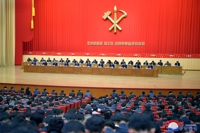 N. Korea calls on party propaganda officials to work harder
N. Korea calls on party propaganda officials to work harder
-
 'Queen of Tears' weaves rich tapestry of Korean contemporary art
'Queen of Tears' weaves rich tapestry of Korean contemporary art -
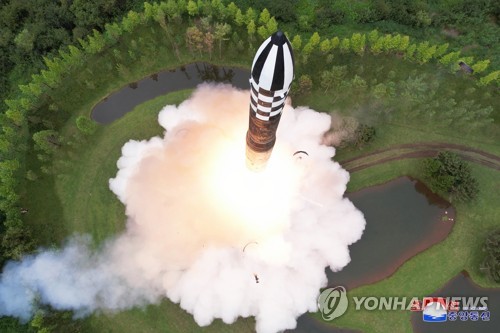 Experts see possibility of N.K. conducting nuclear test before U.S. presidential vote
Experts see possibility of N.K. conducting nuclear test before U.S. presidential vote -
 Details of meeting between Yoon, opposition leader undecided: presidential office
Details of meeting between Yoon, opposition leader undecided: presidential office -
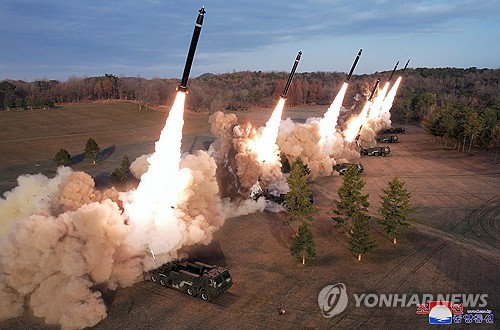 N. Korea says Kim guided simulated nuclear counterattack drills for 1st time
N. Korea says Kim guided simulated nuclear counterattack drills for 1st time -
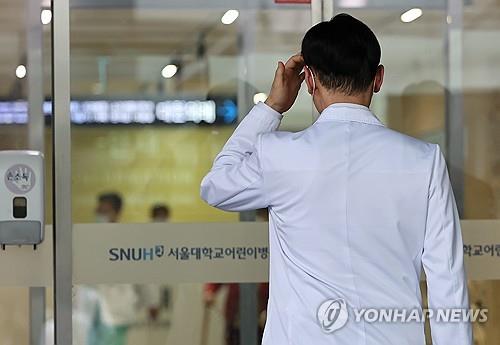 Looming weekly closure of major hospitals feared to worsen medical service crisis
Looming weekly closure of major hospitals feared to worsen medical service crisis
-
 S. Korea eliminated in Olympic football qualifiers as poor defense, undisciplined play prove costly
S. Korea eliminated in Olympic football qualifiers as poor defense, undisciplined play prove costly -
 Indonesia coach left with mixed feelings after eliminating native S. Korea in Olympic football qualifiers
Indonesia coach left with mixed feelings after eliminating native S. Korea in Olympic football qualifiers -
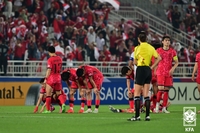 (LEAD) 10-man S. Korea lose to Indonesia to miss out on Paris Olympic football qualification
(LEAD) 10-man S. Korea lose to Indonesia to miss out on Paris Olympic football qualification -
 10-man S. Korea lose to Indonesia to miss out on Paris Olympic football qualification
10-man S. Korea lose to Indonesia to miss out on Paris Olympic football qualification -
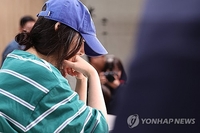 ADOR CEO calls conflict with Hybe 'worst experience of my life'
ADOR CEO calls conflict with Hybe 'worst experience of my life'
















